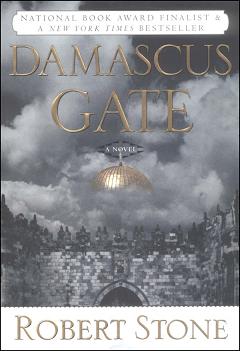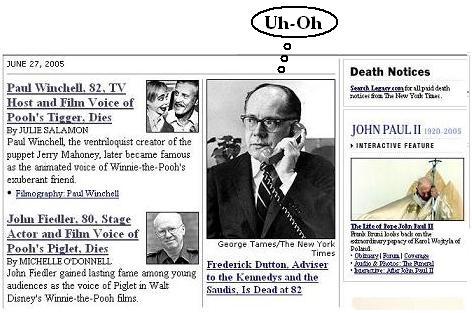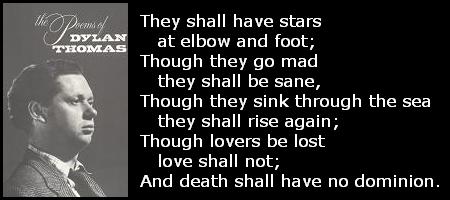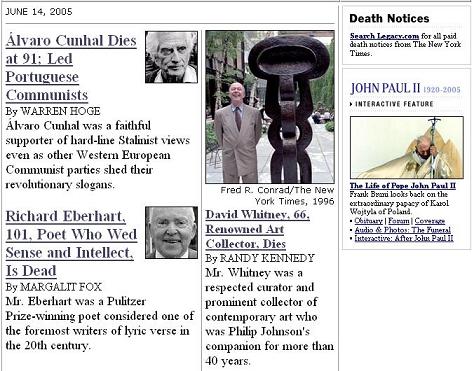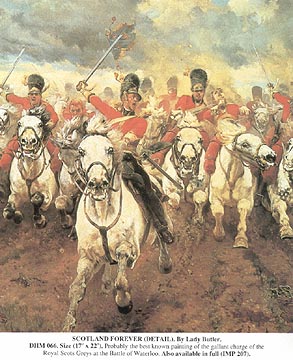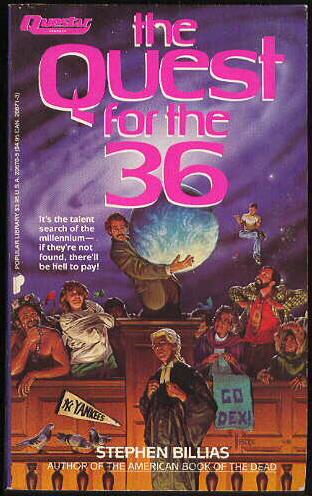From Andrew Cusack's weblog:
April 21, 2005
'For Christ and Liberty'
Though
[it is] a purely Protestant institution (literally), I am rather fond of
Patrick Henry College. Indeed, it takes some courage in this day and
age to only admit students willing to sign a ten-point profession of
Protestant Reformed faith. They also happen to have an old-fashioned
ball featuring 'English country dancing, delicacies such as cream puffs
and truffles and leisurely strolls about the scenic grounds of the
historic Selma Plantation'.
Anyhow, the college, whose
motto is 'For Christ and Liberty', was visited [by] Anthony Esolen, a
contributing editor to Touchstone magazine, who makes these comments:
Today
I received a request to write a short article on Pope Benedict XVI from
a club called the De Tocqueville Society, in a small college in
Northern Virginia.
That such a request
came was no surprise. Its provenance is, and cheeringly so. For this De
Tocqueville Society is made up of a group of students at the new
Patrick Henry College, founded by Mike Farris, the President of the
Home School Legal Defense Association. More than ninety percent of the
college’s students were homeschooled. If there’s a Roman Catholic in
the bunch, I’ve yet to hear about it, and I’ve been to that campus
twice to give lectures. [Note: Esolen does not seem to be aware that
PHC requires its students to be Protestant.]
More on that in a moment. I
could spend all evening singing the praises of PHC (as the students
fondly call it), but let me share one discovery I made that should
gratify Touchstone readers. The first time I spoke there, two years
ago, I was stunned to meet young men and women who—who were young men
and women. I am not stretching the truth; go to Purcellville and see it
for yourselves if you doubt it; I believe my wife took a couple of
pictures, just to quiet the naysayers. The young men stand tall and
look you in the eye—they don’t skulk, they don’t scowl and squirm
uncomfortably in the back chairs as they listen to yet another analysis
of Rebecca of Sunnybrook Farm, or one of the healthier poems of Sylvia
Plath. They’re frank and generous and respectful, but they hold their
own in an argument, and they are eager to engage you in those. They are
comfortable in their skins; they wear their manhood easily. And the
young ladies are beautiful. They don’t wither away in class, far from
it; but they wear skirts, they are modest in their voices and their
smiles, they clearly admire the young men and are esteemed in turn;
they are like creatures from a faraway planet, one sweeter and saner
than ours.
Two years ago I spoke to them
about medieval Catholic drama. They are evangelicals, half of them
majors in Government, the rest, majors in Liberal Arts. They kept me
and my wife in that room for nearly three hours after the talk was
over. “Doctor Esolen, what you say about the habits of everyday life—to
what extent is it like what Jean Pierre de Coussade calls ‘the
sacrament of the present moment’?” “Doctor Esolen, do you see any
connections between the bodiliness of this drama and the theology of
Aleksandr Schmemann?” “Doctor Esolen, you have spoken a great deal
about our recovery of a sense of beauty, but don’t you think that
artists can also use the grotesque as a means of bringing people to the
truth?” “You’ve suggested to us that Christians need to reclaim the
Renaissance as our heritage, yet we are told that that was an age of
the worship of man for his own sake. To what extent is the art of that
period ours to reclaim?” And on and on, until nearly midnight.
The questions were superior to
any that I have ever heard from a gathering of professors—and alas,
I’ve been to many of those. I mean not only superior in their
enthusiasm and their insistence, but in their penetrating to the heart
of the problem, their willingness to make connections apparently far
afield but really quite apropos, and their sheer beauty—I can think of
no better word for it.
A few weeks ago I was in town
for another talk, on the resurrection of the body. The Holy Father had
passed away. At supper, ten or fifteen of the students packed our
table, to ask questions before the talk. They were reverent and
extraordinarily well informed; most especially they were interested in
the Theology of the Body. The questions on that topic continued after
the lecture, and I had the same experience I’d had before, but now
without the surprise.
And these are the young people
who are devoting an entire issue of their journal to the thought of
Cardinal Ratzinger, now the new head of the Roman Catholic Church. They
are hungry to know about him; in the next week or two they will do what
our slatternly tarts and knaves, I mean our journalists, have never
done and will not trouble themselves to do, and that is to read what
Benedict XVI has said, read it with due appreciation for their
differences with him, and due deference to a holy and humble man called
by Christ to be a light not only to Roman Catholics but to all the
nations.
These students don’t know it,
but in their devotion to their new school (they are themselves the
guards, the groundskeepers, the janitors; they ‘own’ the school in a
way that is hard to explain to outsiders), they live the community life
extolled by Leo XIII in Rerum Novarum; in their steadfastness to the
truth they are stalwart participators in the quest set out by John Paul
II in Fides et Ratio; in their welcoming of me and, God bless them, of
the good Benedict XVI, they live in the true spirit of Lumen Gentium,
that greathearted document of the council so often invoked for the lame
tolerance of every betrayal of the ancient faith. And for what it’s
worth, they are readers of Touchstone Magazine.
Be silent, Greeleys and Dowds
of the world. These young people have you whipped, if for no other
reason than that they believe in the One who is Truth, and who sets us
free. How can I praise these my young brothers and sisters any more
highly? God bless them and Patrick Henry College. And the rest of us,
let’s keep an eye on them. We’ll be seeing quite a harvest from that
seedbed!
Many of the points Esolen
commends are things I hope will be found in the colleges of my
university when I get around to starting it. I particularly admire that
Patrick Henry College's young men and women are just that, according to
Esolen. This is all too often hard to achieve in modern American higher
education, where students are quite often just elderly adolescents.
(Though I suspect this has more to do with parents and family than
education).
The absurdist drinking age that
the Federal government underhandedly coerced each state into passing
hinders maturity as well. Indeed, when I start the first college or
colleges of the university I'm planning, each will have a private
college bar which will serve anyone over the age of 16 or so. (Probably
at the barman or barmaid's discretion). Civil disobedience is the only
solution.
Though the graduates Patrick
Henry College provides will be Protestant (at least at the time of
their graduation), I have no doubt that they will act as leaven to
raise up the social and political life of our United States. I'm not
particularly fond that they proudly advertise their commendation as
"One of America's Top Ten Conservative Colleges". I'm not of the view
that colleges ought to be 'conservative' or 'liberal' per se. They
ought to be seen more as communities of inquisitive, curious,
intelligent people united in the quest for truth. Labels like
'conservative' and 'liberal' are far too narrow and allow the
simple-minded to pidgeon-hole things which are too complex for such
monikers.
But anyhow, cheers for Patrick Henry College.
Posted by Andrew Cusack at April 21, 2005 05:25 PM Posted 6/10/2005 at 1:25 AM |

